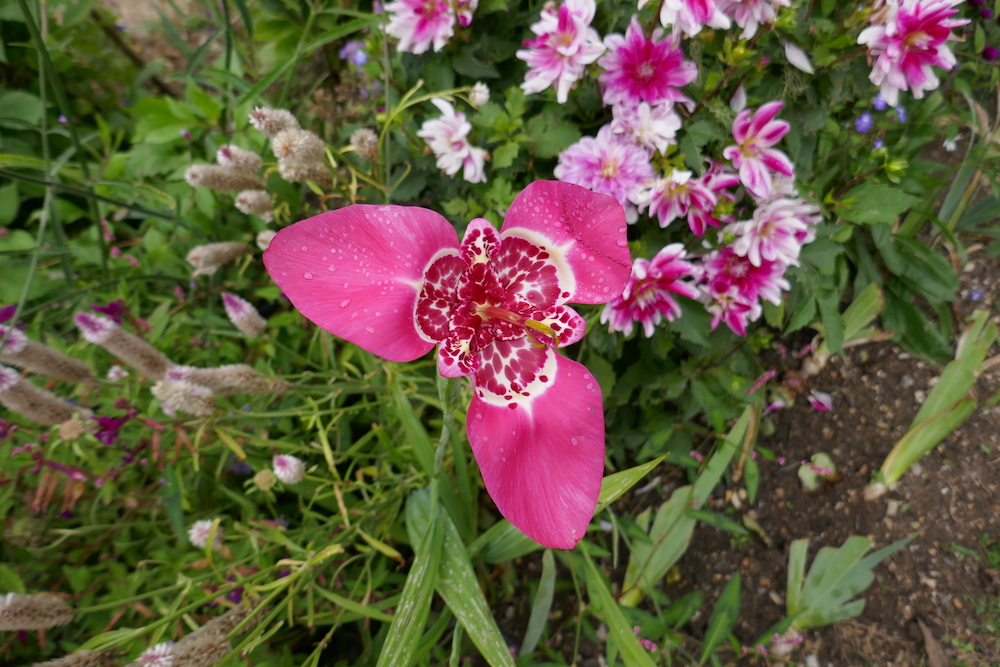6 Ways to Meditate That Don’t Include Sitting Cross-Legged on the Floor
/A beginner's guide to Meditation - what it is, why it's helpful, and 6 ways to meditate that don't include sitting crossed-legged on the floor.
In my recent reader survey, I learned that many of you wanted to learn more about meditation. I’m thrilled to hear that because I think meditation is one of the most powerful practices you can do for your overall health and wellness.
I don’t want to say meditation is hard, but well, sometimes meditation is hard. That’s why we need it.
Because of this, I didn’t want to start with a post that was a zero to 100, here’s everything you need to know to meditate. I wanted to move more gently into the practice of meditation.
That’s why I’m starting with 6 ways to meditate that don’t include sitting on the floor.
I know you might have an image of a super flexible guy sitting in a double lotus cross-legged position, looking like he doesn’t have a care in the world since he’s achieved enlightenment. That’s just a bit daunting, not to mention, unrealistic.
I want to talk more about what meditation is, the benefits, and how you can meditate without even needing to sit quietly on the ground.
What is Meditation?
There are many definitions of meditation, but most can agree that it involves a focusing of the mind.
The Mayo Clinic defines meditation like this:
“The idea behind meditation is to suspend the stream of thoughts that normally occupy your conscious mind. Doing this leads to a state of physical relaxation, mental calmness, and psychological balance.”
I don’t know about you, but I’d be pretty happy to have any one, let alone all three, of the attributes above.
The simple act of noticing where your thoughts go, allows you to be conscious of your patterns. You can observe what you spend a lot of time thinking about. Then you can get curious about why you spend so much time thinking about something.
If you spend a lot of time thinking about your schedule and not being able to fit enough in, then maybe you want to think about simplifying things. Setting aside time at the end of the day to plan your three most important tasks for the next day can free up your brain for more productive or restful activities.
When you become aware of your thought patterns, you can make a decision to change them and also not identify with them. You are not your thoughts.
Why Meditate?
A lot of research has been done showing that meditation can improve your concentration, release stress, boost your immune system, and reduce your blood pressure. All of that without a pill or doctor’s prescription is very enticing.
Many meditation newcomers have a hard time simply sitting on a cushion with the sole intention of quieting the thousands of disruptive thoughts that run through the mind every second.
So I thought we’d start by looking at other ways to focus the mind to achieve some of that delicious mental calmness and psychological balance.
6 Ways to Meditate That Don’t Include Sitting Cross-Legged on the Floor
Get in Nature
There have been numerous studies proving how therapeutic it is to be immersed in nature. Yoga Journal says, “Nothing supports the opening of the heart and mind like the beauty, tranquility, and silence of the natural world.”
Studies or not, simply note how you feel when you’re standing surrounded by enormous Redwoods, or listening to the constant crash of ocean waves. It’s hard to stay fixated on that person who just cut you off in traffic when you see the raw majesty of the natural world.
You can close your eyes. Breathe in the air. Feel the effects on your skin. Place your feet directly on the grass or sand. Be present. Lose yourself.
Being in nature allows me to release unhelpful thought patterns and get into a more balanced meditative state.
Walk
When I first began a formal meditation practice, I struggled with sitting quietly on the floor, trying to quiet my mind. That was just way too much to ask of this very active (in mind and body) gal.
So when I learned about walking meditation, I embraced it with both legs.
You mean, I can move and meditate? I’m in.
It’s ideal to practice barefoot and outside if you can swing it, but indoors will work too, especially if you have hardwood floors. I set a timer and then walk very slowly, putting one foot in front of the other. My eyes are half-mast, not fixated on anything, but just keeping balance. Eventually, you’ll get into a rhythm where you’re not thinking about your pace and foot placement.
I like the movement of a walking meditation when I’m feeling too antsy to sit still. It allows me to center by staying in my body and getting out of my head.
Exercise
If walking meditation still isn’t enough movement for you to quiet your mind, then take it up a notch. I don’t recommend a full-on high-intensity interval training class, but then again, if that’s your sweet spot where all else slips away, go for it.
For most of us, greater movement could include putting some uplifting music on and moving your body effortless to the sounds. Yoga is another perfect meditative exercise where it’s all about combining movement and breath.
I used to race from work to the beach volleyball courts with a million things on my mind, but everything would quickly slip away when I stepped on the court. I’d feel the sand under my feet, the sun on my face, and the strength of my body as I moved around the court. Hello meditation, goodbye chaotic mind!
Pursue a Passion
Volleyball has been a passion of mine for years where I'm able to lose myself, but cooking is another therapeutic, meditative hobby that frees my mind.
Creating something from the heart can quiet the mind to allow you to achieve some inner peace.
Perhaps you like to paint or color or doodle. I have friends who can easily spend hours in their garden and that too can be a wonderful meditative practice.
Pursuing a passion that you love will always produce a calming state that allows the mind to relax.
Get Quiet
The simple act of getting quiet will put you in a meditative state without having to sit cross-legged on the floor.
You can use almost any moment as an opportunity to quiet the mind. Sitting in traffic can be a difficult one, but if you can find a way to relax and turn off your anger towards the long line of cars in front of you, you’ll be well on your way to enlightened guru.
Giving your mind a break from the thousands of thoughts, judgments, predictions, plans, and regrets you have running through your head will provide a welcome breather. Quiet breaks allow the mind and body to calm for that desired psychological balance.
Breathe
If simply quieting your mind and doing nothing seems too daunting, try resting your focus on your breath.
I’ve talked about establishing box breathing when you find yourself stuck with a problem, unable to do anything. The premise is that you slowly breathe in for four counts, hold for four, exhale for four, and leave empty for four. Repeating this sequence two or three times will put you in a much more relaxed state.
You can also just try counting your inhale to four or five, holding for a beat, and then exhaling for the same amount.
Often when we’re stressed and caught up in our thoughts, our breathing becomes shallow. Focusing on long, slow deep breaths helps our nervous system relax, which allows our overall body to move into a more peaceful state.
Be in the moment
Any activity that allows you to be truly present is a great meditative activity that will propel you beyond sitting on the meditation cushion.
Reading may allow you to slip into another world. Truly listening to your partner speak about a problem or triumph allows you to be powerfully present for another human being, which is a great gift for everyone.
Being in the moment allows you to experience all that is in front of you. This is also a great by-product of meditation. Once you’re able to get out of your head and thoughts, you can take in all of the greatness that already exists in your life.
It can be easy to miss some of the everyday wonders if you’re fixated on past or future thoughts. With some focused attention, you’ll be able to soak it all in while appreciating a renewed sense of peace and clarity in your life.
Get Help
If you’d like assistance with gaining a better relationship with your thoughts, it can be worthwhile to get outside help.
I work with people one-on-one to help balance their thoughts. With up to 70,000 thoughts swirling around your head each day, you want to make sure those thoughts are leading you in a positive direction, and not a negative one.
You can learn more about my one-on-one coaching program here.
























